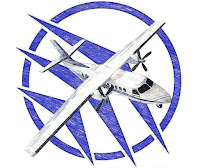 ✈ Indonesia’s principal aircraft maker, PT Dirgantara Indonesia (PTDI), has unveiled its latest regional airliner project, the N245. Although the company provided information on the program at the 2015 Langkawi International Maritime and Aerospace Exhibition (LIMA), it revealed more details and a model at the Indo Defense show held November 2 to 5 in Jakarta.
✈ Indonesia’s principal aircraft maker, PT Dirgantara Indonesia (PTDI), has unveiled its latest regional airliner project, the N245. Although the company provided information on the program at the 2015 Langkawi International Maritime and Aerospace Exhibition (LIMA), it revealed more details and a model at the Indo Defense show held November 2 to 5 in Jakarta.Based on the CN235 medium utility transport that PTDI co-developed with Airbus Defense and Space (CASA), the N245 features a T-tail and Pratt & Whitney PW127 turboprops rather than the General Electric CT7s used in the CN235. The N245 shares much of its structure with the CN235 and would be built on the same production line at PTDI’s Bandung factory. It is slightly longer and lacks a rear cargo loading ramp, allowing for the installation of up to 54 passenger seats.
Intended to fill the niche between the smaller N219 and larger airliners, the N245 would serve as a feeder airliner that can ferry passengers between outlying areas and regional centers with access to mainstream transport links. Its military transport roots would provide it with the capability to operate from short, unpaved runways in rugged terrain, and its design would allow it to undertake multiple short sectors between refuelings. With a maximum takeoff weight of 40,345 pounds, the N245 would carry a payload of 12,125 pounds, take off from a 3,280-foot airstrip and land on a strip as short as 2,360 feet. The pressurized cabin would allow for flight at up to 25,000 feet and range with 54 passengers extends to 600 nautical miles.
Destined to compete with the Bombardier Q300 and ATR 42, the N245 would offer a 5 percent reduction in operating costs over the ATR 42, and a wider, more spacious cabin than either of its competitors. PTDI expects to receive funding for two flying prototypes as part of a national aerospace program overseen by Lapan, the national institute for aeronautics and space. However, the company has not given a time frame for first flight and certification.
 Meanwhile, PTDI is preparing to fly the first prototype of the N219 19-seat airliner/utility transport around the end of the year. Rolled out in November 2015, it was due to have flown this summer, but delays with the supply of some components have hindered progress. A second aircraft nears completion and should fly early next year. Single examples of static and ground test airframes have already begun trials. PTDI expects certification at the end of 2017.
Meanwhile, PTDI is preparing to fly the first prototype of the N219 19-seat airliner/utility transport around the end of the year. Rolled out in November 2015, it was due to have flown this summer, but delays with the supply of some components have hindered progress. A second aircraft nears completion and should fly early next year. Single examples of static and ground test airframes have already begun trials. PTDI expects certification at the end of 2017.Equipped with a Garmin G1000 avionics suite and powered by two 850-shp Pratt & Whitney PT6A-42 turboprops driving Hartzell four-blade propellers, the N219 traces its design from the Airbus/PTDI NC212 light transport, offering a very short field length and sturdy undercarriage that suits operations from the short, semi-prepared strips that serve Indonesia’s remote island and mountain communities.





0 komentar:
Posting Komentar
Catatan: Hanya anggota dari blog ini yang dapat mengirim komentar.